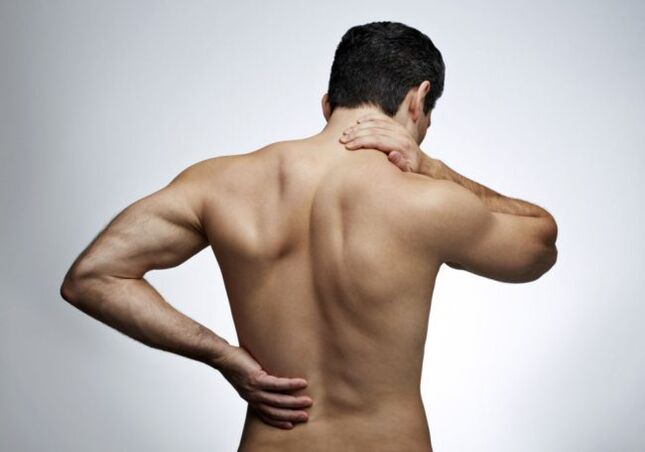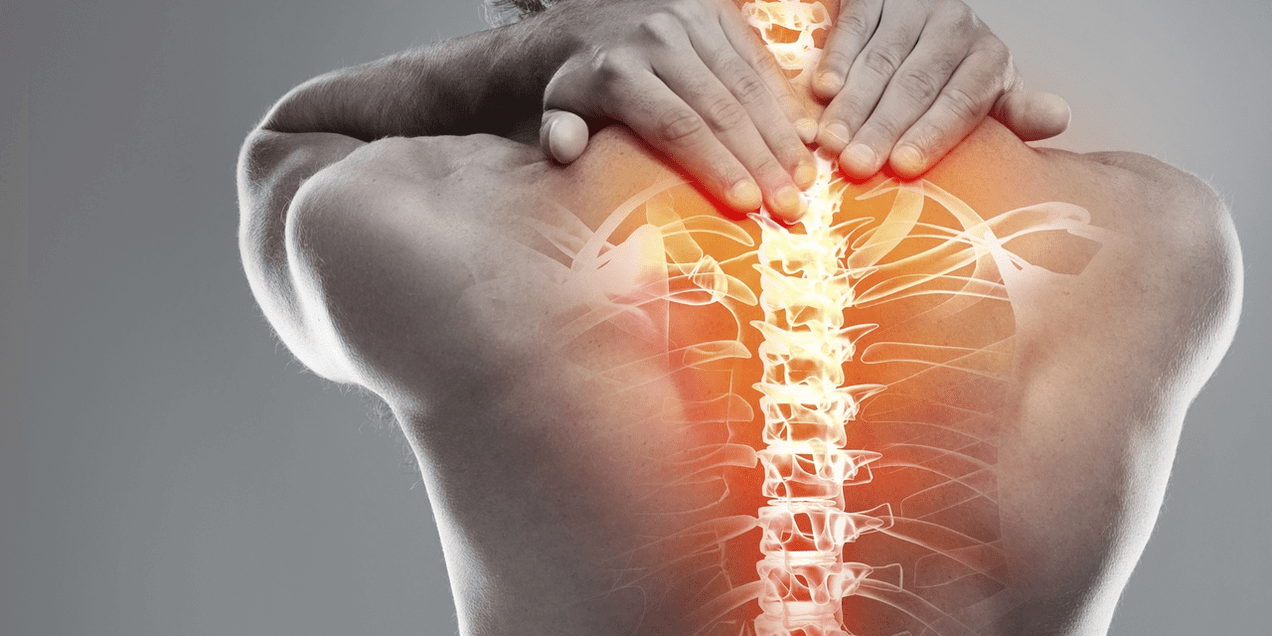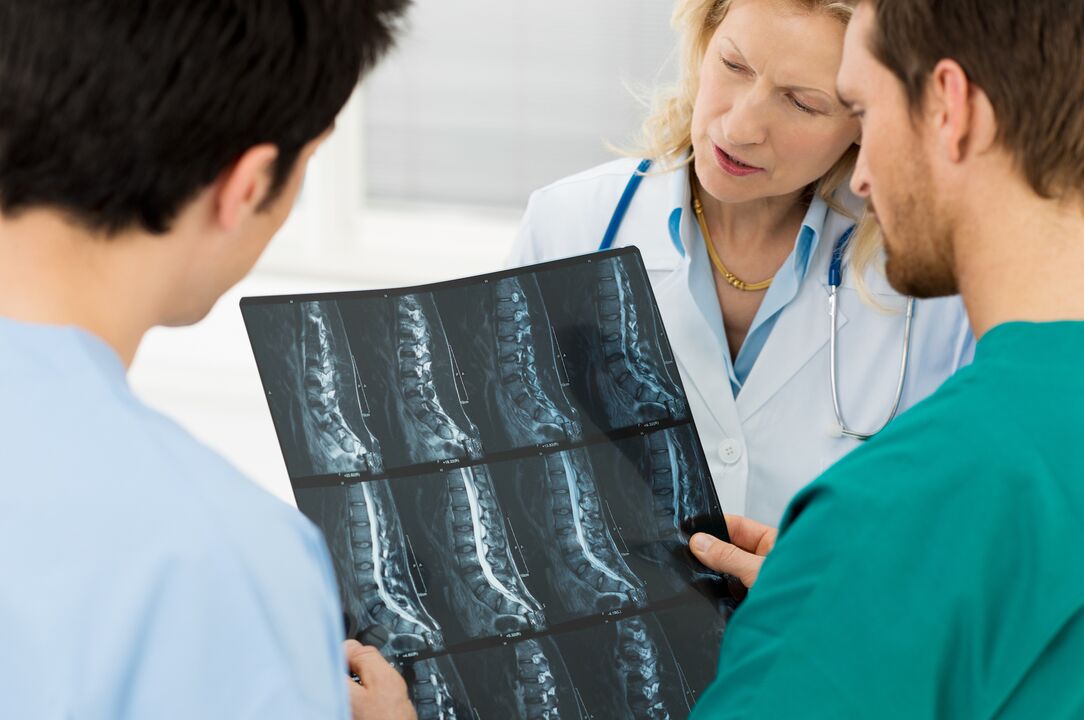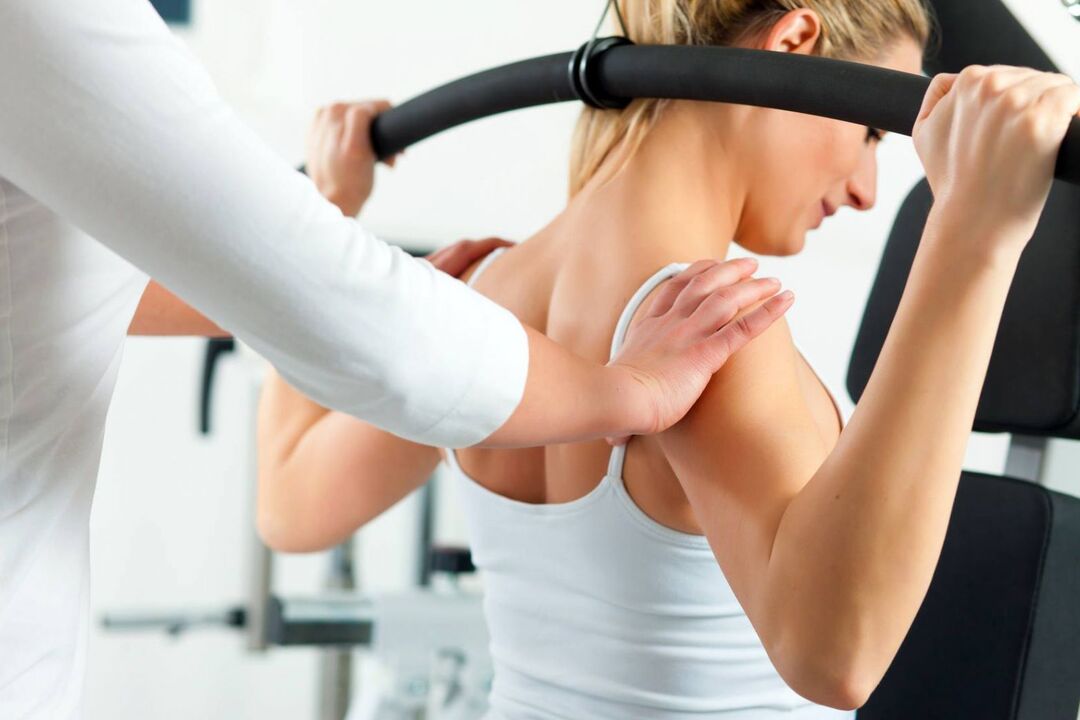Everyone who at least in his life feels pain in the back, lumbar, chest or neck. Symptoms of the first pain and signs of articular cartilage pathological disorders in people of the average age category after 30-35 years.
Signs -Symptoms of osteochondrosis do not distinguish between a person's sexuality, and can therefore affect the spinal vertebra in men and women. However, there is a sad tendency to rejuvenate bone storage diseases when osteochondrosis is observed in high school and senior children.

What is it?
International classification of the 10th assembly disease determines osteochondrosis to the class of musculoskeletal system disease and connective tissue. Osteochondrosis is divided into several categories:
- Osteochondrosis of the spinal cord.
- Spinal osteochondrosis in adults.
- Spinal osteochondrosis is not determined.
Causes of osteochondrosis are associated with infringement of metabolism in the articular cartilage connective tissue, characterized by degenerative-dystrophic changes in the ligament apparatus of the musculoskeletal system and the general violation of the musculoskelet system in the spin structure segment.
The pain syndrome is caused by a deformation of the intervertebral disc integrity, leading to a displacement of the vertebral axis, and as a result, the nerve roots in the vertebral tract are cut. Symptoms and signs of osteochondrosis can affect any of the vertebral system departments, sometimes developing for years, they do not cause the sensation of an uncomfortable person.
In most cases, the cause of osteochondrosis is associated with one's professional activity. Risk groups include the following professional categories:
- accountants;
- cashier;
- The worker;
- Office workers;
- professional athletes;
- Driver of the Vehicle.
However, it is noted that the signs of osteochondrosis are more often shown in women than stronger sex representatives. Many physicians agree that the causes of prolonged osteochondrosis wear high shoes. As a rule, the first symptom of manifestation of neurological disease is diagnosed in women after 25 years.
There are frequent cases when the cause of osteochondrosis is caused by pregnancy. A person's lifestyle is not so important. People who are exposed to obesity form the largest percentage of patients with a neurological clinic. The right position and growth of a person is also very important. It is in such patients that spinal spinal osteochondrosis is most often determined.
In general, the expected factors in the development of the disease include:
- obesity;
- physiological aging of the bone muscle system;
- metabolic violations;
- the traumatic condition of the spine;
- infectious damage to the articular component of the spinal column;
- Incorrect nutrition;
- hard physical labor;
- An inactive lifestyle.
However, the most important causal factor in the development of neurological pathology is a person's genetic (genetic) tendency to articular disease, which makes himself feel in childhood or youth.

Development
With osteochondrosis, symptoms and treatment are determined depending on the severity of the disease. Therefore, the development of osteochondrosis has 4 stages of the disease:
- The first stage is the onset of pathological neuralgia, characterized by the dehydration of the pulpos nucleus in the intervertebral disc. As a result, the microcussion occurs in the fibrous ring. Signs and symptoms of osteochondrosis in the developmental stage of this neurological pathology do not cause special discomfort to a person. Only in the case of active physical action, the departments affected by the spinal column.
- The second stage during diagnostic laboratory examination is determined by reducing the height of the intervertebral disc, and their distance. The classical sign of the pathological condition is the onset of sagging ligaments in the musculoskeletal system. Symptoms of osteochondrosis of the 2nd - uncomfortable pain, even with little physical anxiety, when pain or pain occurs in the area of damage to the support system.
- The third stage is the partial limitations of the movement of the spinal segment. At the developmental stage of neurological pathology, prolapse and disc promotion occur. In some cases, arthrosis is formed in the intervertebral joints. Depending on the localization of the damage zone, the patient feels the symptoms of osteochondrosis in the neck, back or lower back.
- The fourth stage is the most difficult neurological disorder in the vertebral system, which is expressed in the limits of joint or complete mobility. In such a diagnostic condition, bone growth (osteophytes) is formed in the place of vertebral compounds, which causes micro -injury to the nerve branches and neighboring spinal segments. In most cases, the symptoms of osteochondrosis of the 4th do not cause unpleasant pain and sensations, as the joints have a petrified appearance.
Type
In neurology, osteochondrosis is divided into several types:
- Cervical cervical osteochondrosis.
- Thoracic osteochondrosis in the vertebral system.
- Lumbosacral osteochondrosis of the spinal column.
There is also a common general osteochondrosis, when several departments of the musculoskeletal system fall into the damage zone.
Symptom
Consider the cause of osteochondrosis, and the symptoms of neurological diseases shown in a specific damage zone.
Cervical osteochondrosis, symptoms and signs:
- Symptoms of pain in the cervical and occipital zones.
- Weaknesses in the neck muscles.
- Dizziness and headache in the temporal and/or occipital zones.
- Unstable intracranial pressure.
- The appearance of the crisis or click on the neck while tilted and/or rotation of the head.
- Pain in the shoulder or lower arm.
- Numbness from the top, especially the fingers.
With the pathology of the thoracic spine, osteochondrosis is indicated by the following symptoms and signs:
- It hurts in the heart.
- Symptoms of pain in the chest of breathing limit.
- Emits pain under the shoulder blade.
- Crawl goosebumps in the body.
- Compression of the thoracic region and the numbness of the body.

Before treating osteochondrosis of the thoracic area, it is necessary to clearly diagnose neurological pathology, as symptoms are very similar to other diseases of the respiratory, cardiovascular and gastrointestinal system.
Back osteochondrosis is the most common category of neurological disorders for the vertebral system. Sacrifice and/or lumbar parts of the musculoskeletal spinal cord fall into the defeat zone.
With back osteochondrosis, symptoms, causes and treatment, it is necessary to determine that it is distinguished, as the anatomy of the human body is most exposed to various injuries and neurological conditions. Often, the lower vertebral part is subject to other clinical pathology, for example, pinching sciatic nerves, ishias, radiculitis and so on.
The main feature of lumbar zone neurological lesions is the increased pain during physical work. Symptoms of spinal osteochondrosis:
- Tingling in the feet.
- Stupid pain or back pain, acute depreciation in this area is often observed.
Osteochondrosis in children is no different in the symptoms of pain from adult patients. Dystrophic degenerative disorders in children are the result of the genetic dependence of the musculoskeletal system. However, there is another cause of osteochondrosis in children, when young organisms are under the strong load of the musculoskeletal system. We talk about professional sports or heavy physical work done by children.
Diagnostics
Diagnostic exams include the following steps:
- Patient history.
- X -ray scanning the spinal problem area.
- Myelography.
- Computers or magnetic resonance tomography.
- In the case of need, nuclear-magnetic resonance is used.
Treatment
Effectively cure degenerative spinal disorders, perhaps only in the early stages of the disease, when there is no complicated factor, and clearly determines the cause of osteochondrosis. The treatment of the disease shows a comprehensive medical approach to this problem.
In the early stages, the effects of drugs on the articular cartilage were made, and physiotherapeutic procedures will help restore the loss of the loss of the bone muscle system. The end stage of the treatment of the musculoskeletal system is compliance with medical and prevention steps.
After establishing symptoms, signs and causes of osteochondrosis, neuralgic pathological treatment begins with conservative therapy, which allows for eliminating pain syndrome and relieves inflammation pressure in the structure of the spinal tissue. The release of pain symptoms is performed by various therapeutic blockade, epidural action and more. Medical workers' services have provided a wide selection of pharmacological groups and medicines that allow you to stop the burden of pain and reduce muscle-tonic syndrome. Restore vertebrate activity using physiotherapy:
- static magnetic field action;
- use of low frequency current;
- ultrasound correction;
- Laser radiation and so on.
During the recovery and prevention period, it is very effective in the use of massage (hydromassi) and physiotherapy and physical education (exercise therapy), which strengthens the lower muscle corset, chest or cervix of the vertebral system, and also contributes to nerve root compression.
Nutrition suggestions for neurological pathology
Proper medical nutrition is very important, as it improves drug treatment activity. There are no special conditions when choosing a diet. Nutrition recommendations are based on limiting certain food products and compliance with balanced rules for eating. The products used should provide the body with the spectrum of beneficial vitamin and mineral components, with a minimum amount of salt.

Recommended food:
- Fresh vegetables (carrots, cabbages, onions, tomatoes, cucumbers and other agricultural gifts).
- Dairy and dairy products (kefir, roasted milk, cottage cheese, sour cream).
- Low nutrition -meat and fish.
- Fruits and fresh juices.
- Mushrooms, nuts, sunflower seeds.
Food products to be limited in daily diet:
- Wine.
- Legumes.
- Sugar, salt, smoked and oranges.
- Sharp pruning, tea, coffee, flour products and so on.
It is important to know that the daily use of two liters of purified water will stimulate the operation of the articular elements of the spine, and also increase the peristalsis of the gastrointestinal tract.
Traditional medicine recipe
Traditional medicine treatment is an alternative way to affect the articular structure of the spine. However, such treatment must be done in conjunction with the drugs formally prescribed for drug therapy.
Recipe No. 1. Saber. Review of alcohol from grassy plants can be scrubbed with the spinal area of the problem. In 200 g. Dry raw materials are taken by 500 ml of alcohol or products, namely alcohol.
Recipe No. 2. Home ointment from osteochondrosis. Material composition:
- Flour - 1 tbsp. L. ;
- Chicken eggs - 1 pc. ;
- Butter - 80 g;
- Vinegar (9%) - 1 tbsp. L.
All therapeutic components are carefully mixed, and are displayed in a dry, dark place for 2-3 days. Medical products are rubbed into the vertebra corset problem area.
Recipe No. 3. Tincture of Black Radish. To provide a healing composition, it is necessary to:
- 100 ml of vodka or diluted alcohol;
- 200 g of natural bee products (honey);
- 300 ml of fresh black carrot juice.
All ingredients are mixed and cost for 12 hours. Such home compression will be an effective treatment for treatment not only for osteochondrosis, but will also help with other neurological disorders of the musculoskeletal system, for example, with radiculitis or rheumatism of the frame joint.

Precaution
Therapeutic prevention consists of proper nutrition, personal hygiene and hygiene, as well as adhering to healthy norms in the dormitory. You should also protect your body from exposure to infectious and bacterial agents. Daily Physical Education, walking in fresh air, water procedures in summer and winter, will have a good effect on the body as a whole, and on the articular segment of the spine, in particular. It is very important to take precautionary medical action with the growing body, that is, children.
Take care of yourself and always be healthy!

























